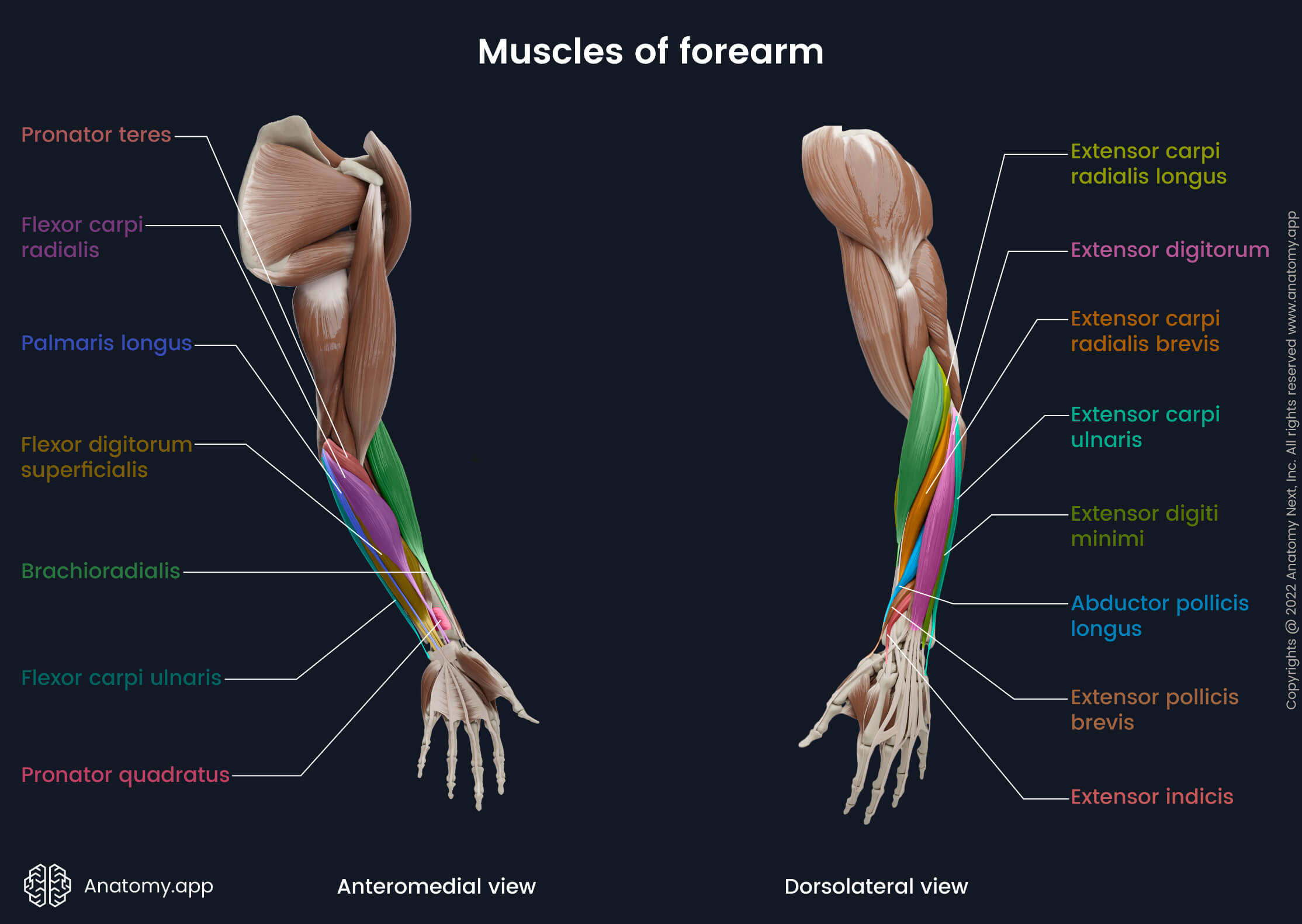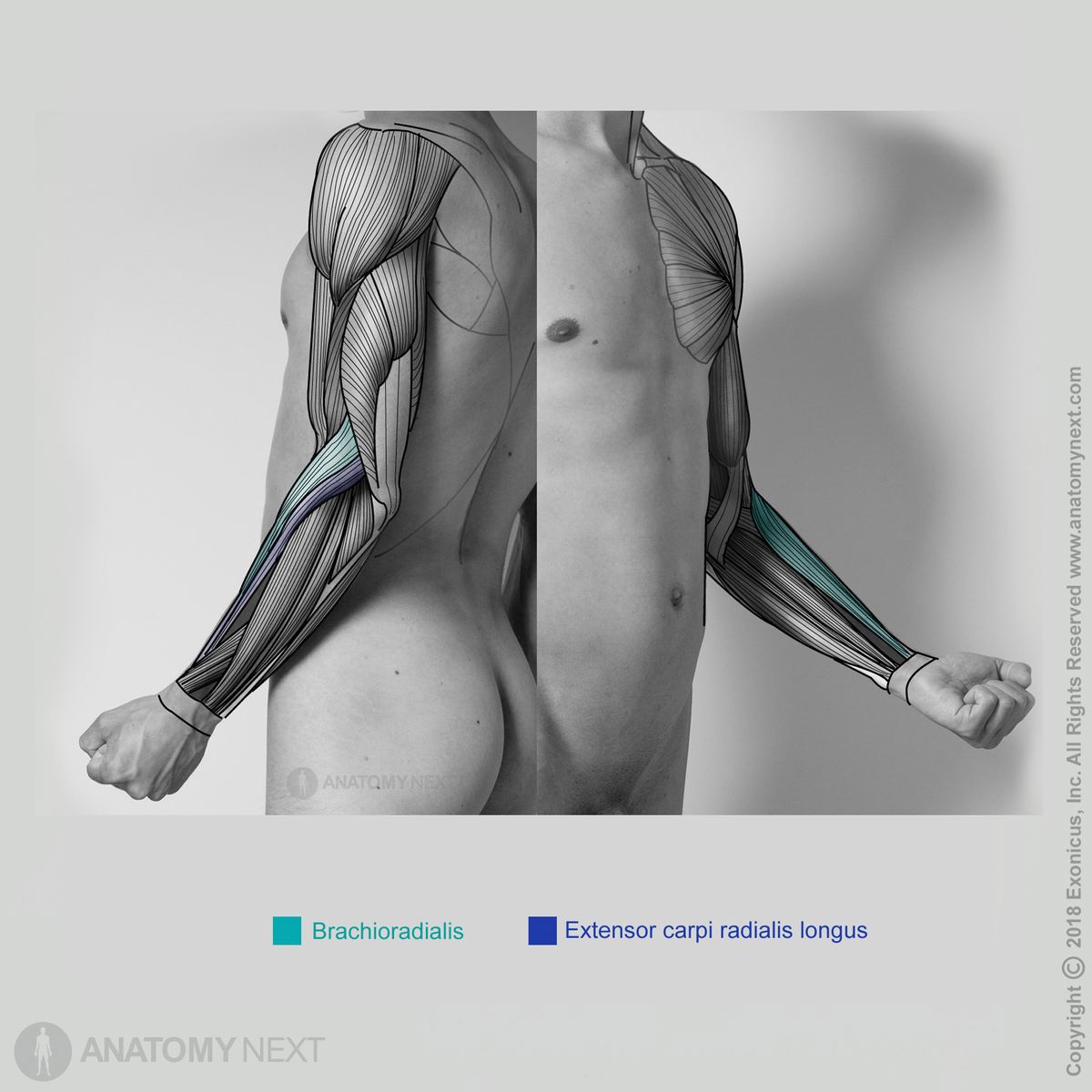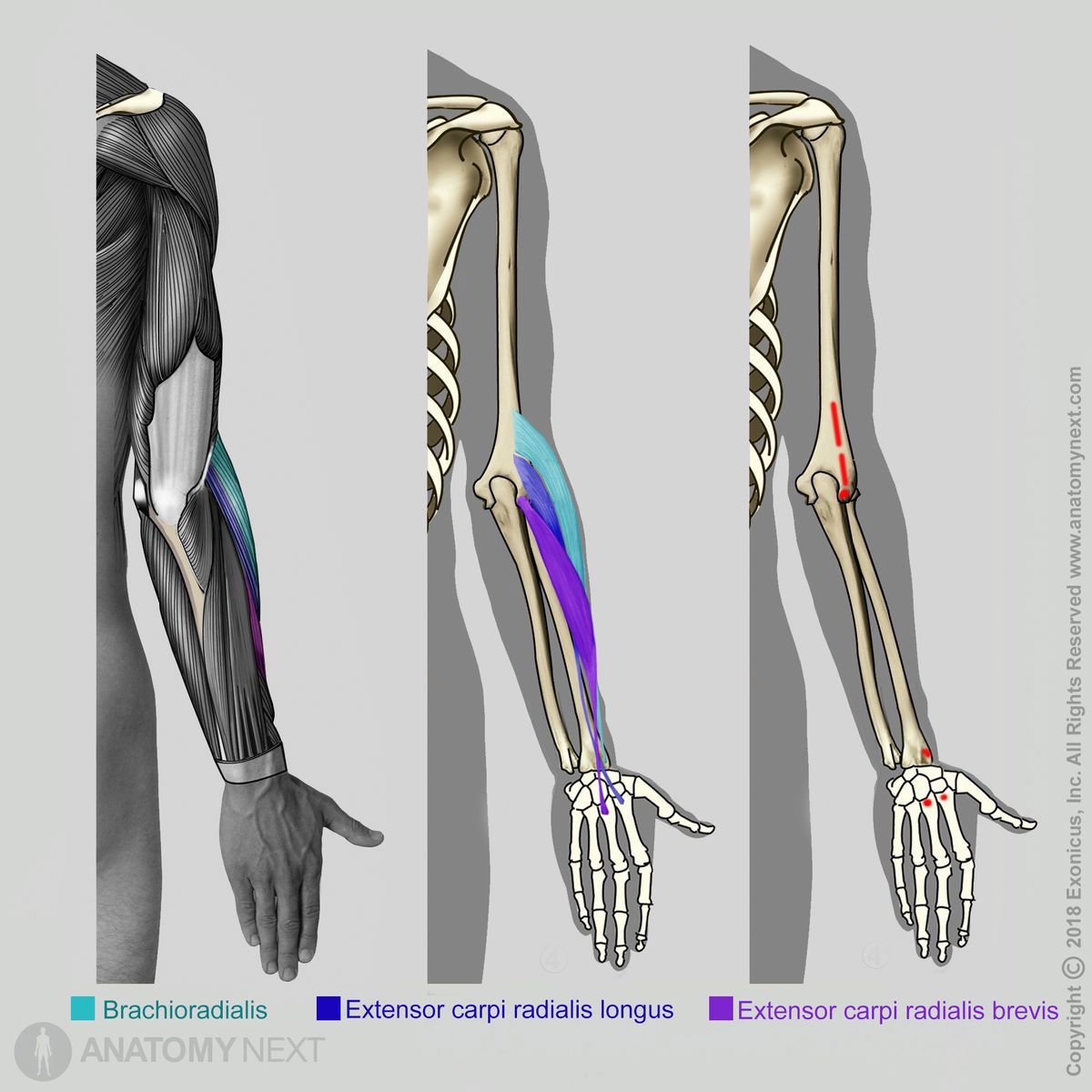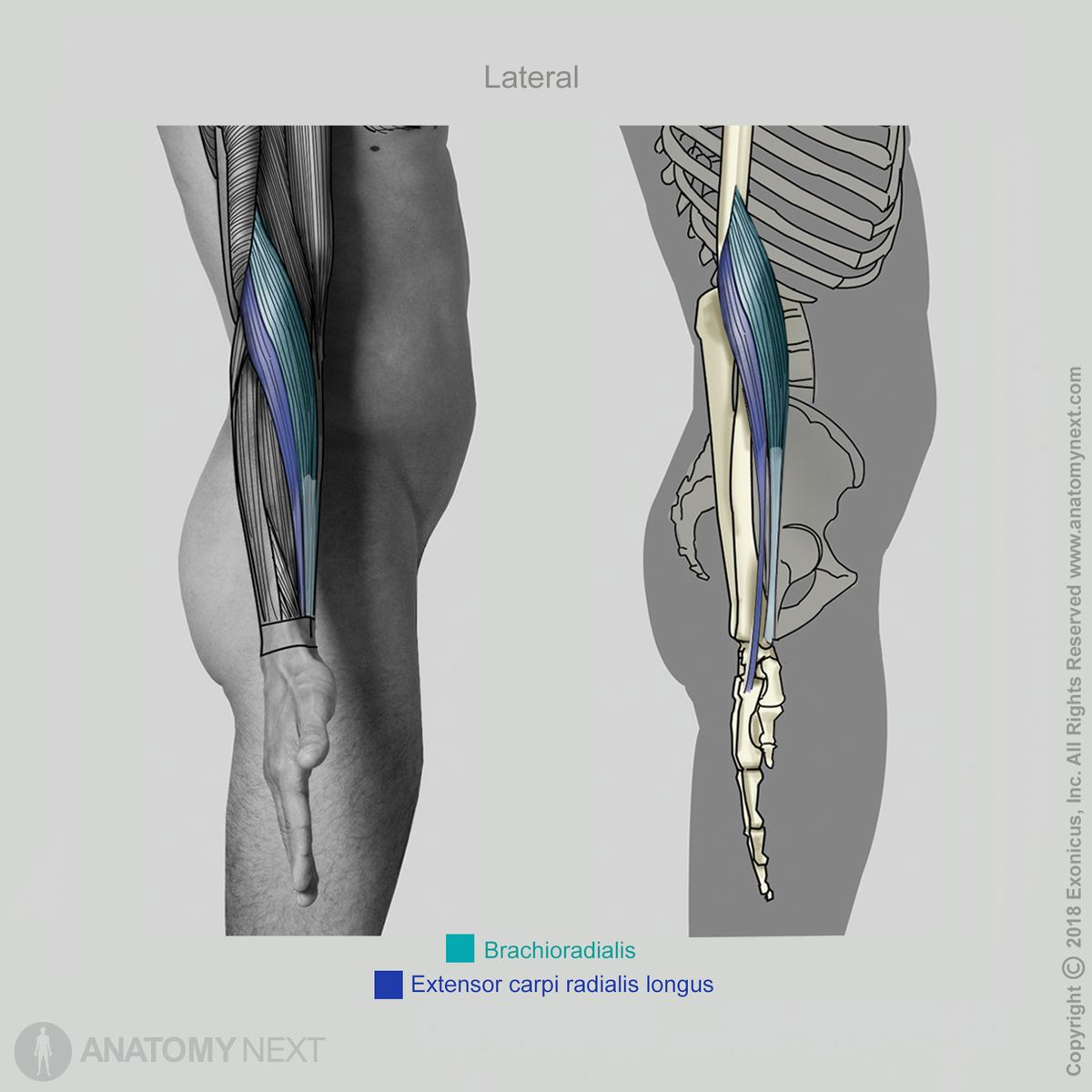- Anatomical terminology
- Skeletal system
- Joints
- Muscles
- Head muscles
- Neck muscles
- Muscles of upper limb
- Muscles of pectoral girdle
- Muscles of shoulder region
- Muscles of upper arm
- Muscles of forearm
- Anterior compartment
- Lateral compartment
- Posterior compartment
- Muscles of hand
- Thoracic muscles
- Muscles of back
- Muscles of lower limb
- Heart
- Blood vessels
- Lymphatic system
- Nervous system
- Respiratory system
- Digestive system
- Urinary system
- Female reproductive system
- Male reproductive system
- Endocrine glands
- Eye
- Ear
Brachioradialis
The brachioradialis (Latin: musculus brachioradialis) is a fusiform-shaped superficial muscle of the upper limb that stretches between the humerus and radius. It belongs to the lateral compartment of the forearm muscles. Although the brachioradialis is located in the lateral compartment together with two extensors - extensor carpi radialis longus and brevis - it is one of the forearm flexors.
| Brachioradialis | |
| Origin | Lateral supracondylar ridge of humerus, lateral intermuscular septum of arm |
| Insertion | Superior to styloid process of radius |
| Action | Flexion of forearm |
| Innervation | Radial nerve (C5, C6) |
| Blood supply | Radial recurrent and radial collateral arteries |


Origin
The brachioradialis muscle originates from the lateral supracondylar ridge of the humerus and lateral intermuscular septum of the arm.

Insertion
The brachioradialis descends and inserts superior to the styloid process of the radius.

Action
The brachioradialis muscle provides the flexion of the forearm at the elbow joint. Also, it is responsible for keeping the forearm in the intermediate position between the supination and pronation of the forearm.
Innervation
The brachioradialis is innervated by the radial nerve (C5, C6) - a branch of the brachial plexus.
Blood supply
The brachioradialis muscle receives arterial blood supply from the radial recurrent branch of the radial artery and radial collateral artery of the deep brachial artery.